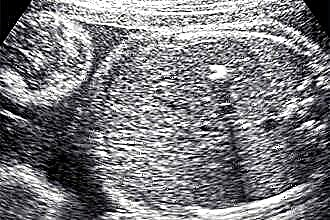The diagnosis of hearing loss is made by patients with more or less serious hearing impairment, which does not go away on its own and requires treatment. In modern medicine, there is a classification of hearing loss into three main types: conductive, sensorineural and mixed. In addition, the disease is divided into hereditary, congenital and acquired and has 4 stages.
What is this disease?
 But sometimes there is also sensorineural hearing loss - what is it and what are its main symptoms? The diagnosis of sensorineural hearing loss is synonymous with sensorineural hearing loss, which is made when the patient's perception of sound entering the auditory canal is impaired due to damage to the organs of the inner ear, the auditory nerve, or the part of the brain responsible for sound perception.
But sometimes there is also sensorineural hearing loss - what is it and what are its main symptoms? The diagnosis of sensorineural hearing loss is synonymous with sensorineural hearing loss, which is made when the patient's perception of sound entering the auditory canal is impaired due to damage to the organs of the inner ear, the auditory nerve, or the part of the brain responsible for sound perception.
In the acute course of the disease, hearing decreases sharply. But when the disease develops gradually, the first signs of hearing impairment may not be noticed. Then the disease begins to progress and its symptoms become more noticeable every week:
- lowering the auditory threshold;
- periodic ringing or tinnitus;
- frequent dizziness;
- difficulty in maintaining balance.
Only a doctor can make an accurate diagnosis and correctly establish the stage of the disease, who should be contacted immediately at the first manifestations of the symptoms of the disease.
 In addition to an external examination of the ear, the doctor does a series of tests. With the help of an audiogram, the degree of hearing damage is determined. Weber's test helps to determine which ear hears better, there is unilateral or bilateral sensorineural hearing loss. And the Rinne test determines the air and bone conduction of sound.
In addition to an external examination of the ear, the doctor does a series of tests. With the help of an audiogram, the degree of hearing damage is determined. Weber's test helps to determine which ear hears better, there is unilateral or bilateral sensorineural hearing loss. And the Rinne test determines the air and bone conduction of sound.
Depending on the stage at which the disease is and what caused the development of sensorineural hearing loss, treatment is prescribed on an outpatient basis, or the patient is admitted to a hospital.
Causes and treatment
Treatment for sensorineural hearing loss depends on the type and cause of the disorder. Not all of its types are amenable to drug therapy. Operation is often the only option. Therefore, correct diagnosis at the first stage of treatment allows you to determine how much it is possible to restore hearing, at least partially. Let's take a closer look at the types of disease.
- Hereditary sensorineural hearing loss is a consequence of damage to the genetic apparatus of one or both parents. It manifests itself from birth and does not respond to treatment. At best, hearing aids or implantation helps to partially compensate for hearing loss. If your hearing is slightly impaired, your hearing aid can improve it.
 Congenital hearing loss most often occurs when the fetus is affected by toxic substances or potent drugs. Underdevelopment of the hearing aid is observed in 15% of premature babies. Moreover, the shorter the period during which the child was born, the more likely it is that there will be problems with hearing. Sometimes hearing is impaired as a result of fetal asphyxiation or head injury. With congenital hearing loss, treatment is practically ineffective. We can only talk about a way to compensate for hearing.
Congenital hearing loss most often occurs when the fetus is affected by toxic substances or potent drugs. Underdevelopment of the hearing aid is observed in 15% of premature babies. Moreover, the shorter the period during which the child was born, the more likely it is that there will be problems with hearing. Sometimes hearing is impaired as a result of fetal asphyxiation or head injury. With congenital hearing loss, treatment is practically ineffective. We can only talk about a way to compensate for hearing.- Acquired hearing loss in most cases at an early stage can be completely healed. Doctors usually manage to stop or greatly slow down its progression. If acute sensorineural hearing loss occurs as a result of injury or previous illness, treatment should be started immediately. In the chronic form of the disease, it is necessary to undergo a course of maintenance therapy approximately every six months.
- Left-sided chronic sensorineural hearing loss occurs when the left ear is constantly exposed to negative environmental factors. It can be a working air conditioner, a draft, loud sounds. For example, this type of illness often develops in telephone operators, who usually hold the receiver to their left ear and write something down with their right. Treatment in this case is aimed primarily at eliminating the causes and restoring hearing.
Stages of the disease
 The success of treatment is also highly dependent on the degree of hearing loss. At the lightest, the first, when the auditory threshold is lowered to 25-40 dB, it is often possible to save hearing. But most patients ignore the first symptoms and seek help only when the disease has reached the second stage, in which the sensitivity of hearing is reduced to 40-55 dB. In this case, the patient:
The success of treatment is also highly dependent on the degree of hearing loss. At the lightest, the first, when the auditory threshold is lowered to 25-40 dB, it is often possible to save hearing. But most patients ignore the first symptoms and seek help only when the disease has reached the second stage, in which the sensitivity of hearing is reduced to 40-55 dB. In this case, the patient:
- understands a whisper only at close range;
- clearly hears speech from 4-5 meters;
- almost does not catch quiet sounds: rustle of grass, ticking of a clock;
- often hears extraneous noises in the ears;
- suffers from recurrent dizziness.
At this stage, outpatient treatment is usually prescribed and a course of physiotherapy is carried out: ultrasound, acupuncture therapy, electrophoresis, etc.
With grade 3 sensorineural hearing loss, the symptoms continue to intensify, the hearing threshold drops to 55-70 dB, and the disease manifests itself even more clearly. Dizziness is often accompanied by vomiting, tinnitus is constant and severe. It is difficult for the patient to remain upright and to distinguish words spoken from a distance of more than 1-3 meters.
 If grade 3 hearing loss cannot be treated, and hearing does not improve, the question of assigning a disability group 2 can be raised. The most severe stage of the disease is grade 4, after which, with a hearing loss of more than 90 dB, sensorineural deafness occurs. The acquired disease reaches this stage only in the absence of regular adequate treatment.
If grade 3 hearing loss cannot be treated, and hearing does not improve, the question of assigning a disability group 2 can be raised. The most severe stage of the disease is grade 4, after which, with a hearing loss of more than 90 dB, sensorineural deafness occurs. The acquired disease reaches this stage only in the absence of regular adequate treatment.
Therefore, it is so important to seek qualified medical help in time. Remember that when a sensorineural hearing loss is diagnosed, treatment with folk remedies will only work if it is used as part of a comprehensive therapy. And then after the obligatory agreement with the attending physician. Otherwise, time will only be wasted and the disease will be launched.

 Congenital hearing loss most often occurs when the fetus is affected by toxic substances or potent drugs. Underdevelopment of the hearing aid is observed in 15% of premature babies. Moreover, the shorter the period during which the child was born, the more likely it is that there will be problems with hearing. Sometimes hearing is impaired as a result of fetal asphyxiation or head injury. With congenital hearing loss, treatment is practically ineffective. We can only talk about a way to compensate for hearing.
Congenital hearing loss most often occurs when the fetus is affected by toxic substances or potent drugs. Underdevelopment of the hearing aid is observed in 15% of premature babies. Moreover, the shorter the period during which the child was born, the more likely it is that there will be problems with hearing. Sometimes hearing is impaired as a result of fetal asphyxiation or head injury. With congenital hearing loss, treatment is practically ineffective. We can only talk about a way to compensate for hearing.

